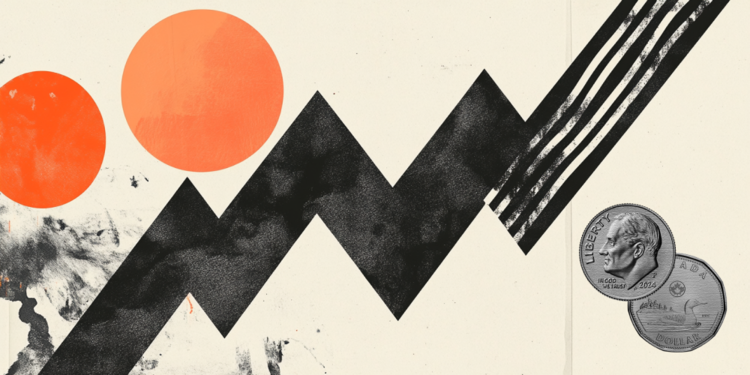Although not considered a disease, overactive bladder (OAB) is a set of urinary symptoms that can be detrimental to daily life and quality of life.
According to the National Overactive Bladder Study (NOBLE), the prevalence of OAB is 16.9% for women and 16% for men.
But how does it affect the urinary system? What are the causes? How is this problem diagnosed and treated?
Understand below.
What is overactive bladder?
The International Continence Society defines that overactive bladder (OAB) — or Overactive Bladder Syndrome and also popularly called nervous bladder — is one that manifests itself through symptoms such as urinary urgency, with or without urge incontinence.
Generally, these symptoms are associated with an increase in urination frequency and the occurrence of nocturia, without an identifiable local or metabolic cause.
Involuntary contractions are more intense than normal and occur even when the bladder is not full, leading to a sudden, urgent need to urinate.
This can affect a person’s quality of life, as it is an embarrassing situation and can limit daily activities.
What is the difference between overactive bladder and urinary incontinence?
Overactive bladder and urinary incontinence are two conditions related to the urinary system, but they are distinct in their symptoms and characteristics.
OAB is a syndrome characterized by symptoms such as urinary urgency, increased urinary frequency and, often, nocturia (the need to urinate during the night).
On the other hand, incontinence is a condition in which there is involuntary loss of urine. It can be caused by a number of reasons, and BH is just one of the possible causes of urinary incontinence.
In other words, not all people with OAB necessarily have incontinence, and not all people with incontinence have this problem.
What is the cause of overactive bladder?
According to the Urology Care Foundation, among the reasons for the development of nervous bladder are:
- Neurological disorders or damage to signals between the brain and bladder;
- Hormonal changes;
- Pelvic muscle weakness or spasms;
- A urinary tract infection;
- Side effects of a medicine;
- Diseases that affect the brain or spinal cord, such as stroke and multiple sclerosis.
Although the prevalence reaches more than 30% of individuals over 75 years of age, this does not mean that it is synonymous with advanced age.
Overactive Bladder Symptoms

The main symptom of OAB is an intense and sudden sensation of an urgent need to urinate, often accompanied by discomfort or pressure in the bladder area.
Other associated symptoms are:
- Increased urinary frequency : people with OAB often urinate more frequently than normal, and may urinate several times throughout the day and night;
- Urge urinary incontinence : urinary urgency can lead to urgency incontinence, which is the involuntary loss of urine before being able to reach the bathroom. This can be embarrassing and significantly affect quality of life;
- Nocturia : that need to wake up during the night to urinate, which can disturb your sleep;
- Mixed incontinence : In some cases, BH can occur together with other types of urinary incontinence, such as stress incontinence, where urine is lost during physical activity or exertion;
- Difficulty emptying the bladder : This difficulty can even lead to urinary tract infections.
How is the diagnosis made?
The diagnosis of overactive bladder is mainly based on clinical assessment. In addition to talking to the patient about their symptoms (anamnesis), the doctor can use urination records, laboratory and imaging tests, as well as urodynamic assessment.
During the initial assessment, it is crucial to gather information that rules out other possible causes of symptoms that are not related to the nervous bladder.
According to the Oswaldo Cruz Foundation, to distinguish OAB from urinary infection, for example, the patient must undergo simple clinical tests, such as the Type I Urine Examination (EAS) and urine culture, in order to rule out the presence of Urinary Tract Infection (UTI).
If the results of these tests are negative for UTI and symptoms of urinary urgency persist, then the diagnosis of this syndrome can be confirmed.
How is overactive bladder treated?

There are ways to treat this urinary dysfunction according to the American Urological Association, but they all depend on specialized medical monitoring.
Conservative treatments are usually the first approach: they include oral medication, pelvic floor rehabilitation, and behavioral therapy.
The goal of treatment for overactive bladder is to prolong the interval between urination and reduce urinary urgency.
Another therapeutic option is the use of medication. Anticholinergic agents act on muscarinic receptors, inhibiting detrusor contractions and are the most commonly prescribed medications for OAB.
When the previously mentioned treatments do not produce improvements, other options can be considered, such as electrical stimulation of the tibial nerve, the application of botulinum toxin type A and sacral neuromodulation.
Surgery is considered a last resort. It aims to increase bladder capacity through cystoplasty with an intestinal segment of detubulized ileum.
How to prevent this condition?
Experts from the Brazilian Society of Urology give some self-care tips for overactive bladder and how to prevent this condition:
- Maintain a healthy lifestyle : maintaining an adequate body weight can be good as excess weight can increase pressure on the bladder. Adopt a balanced diet and avoid foods and drinks that can irritate the bladder, such as caffeine, alcohol, spicy foods and artificial sweeteners;
- Practice pelvic floor exercises : Pelvic floor exercises, such as Kegel exercises, can help strengthen the muscles that control the bladder and improve urinary continence;
- Maintain adequate hydration : Drinking fluids in a balanced way is important for bladder health. Avoiding excessive fluid intake before bed can help reduce nocturia (the need to urinate at night);
- Avoid smoking and alcoholic beverages : these substances can irritate the bladder and worsen the symptoms of overactive bladder;
- Manage stress : Chronic stress can worsen overactive bladder symptoms in some people. Practicing stress management techniques such as meditation and yoga can be beneficial.
Follow all the health news on CNN!
Source: CNN Brasil
I am an experienced journalist and writer with a career in the news industry. My focus is on covering Top News stories for World Stock Market, where I provide comprehensive analysis and commentary on markets around the world. I have expertise in writing both long-form articles and shorter pieces that deliver timely, relevant updates to readers.







